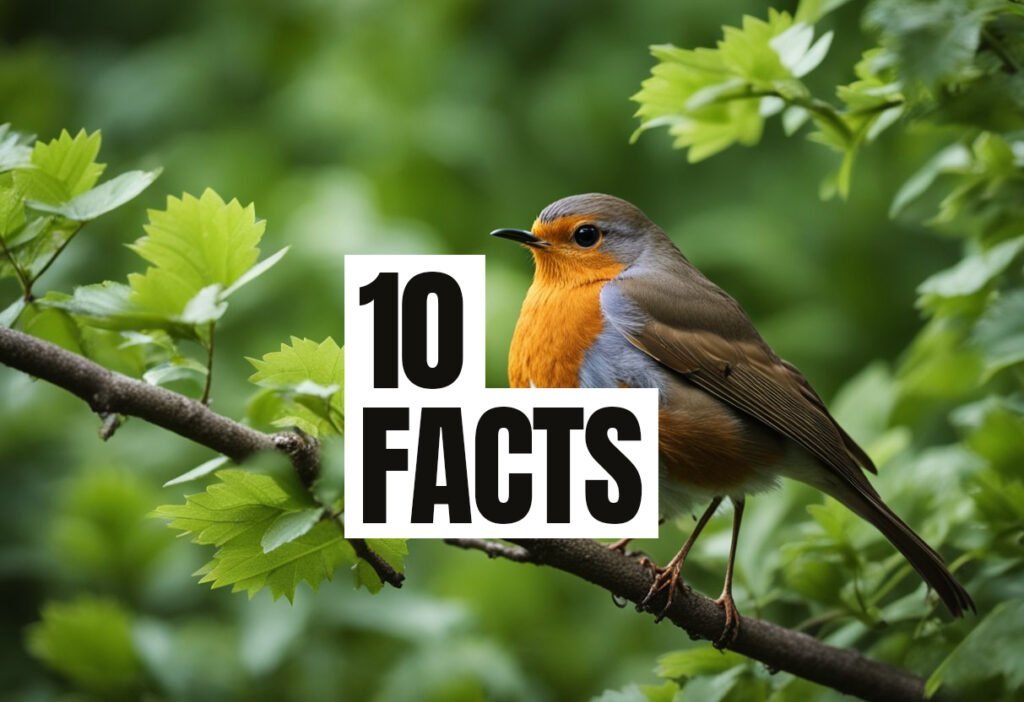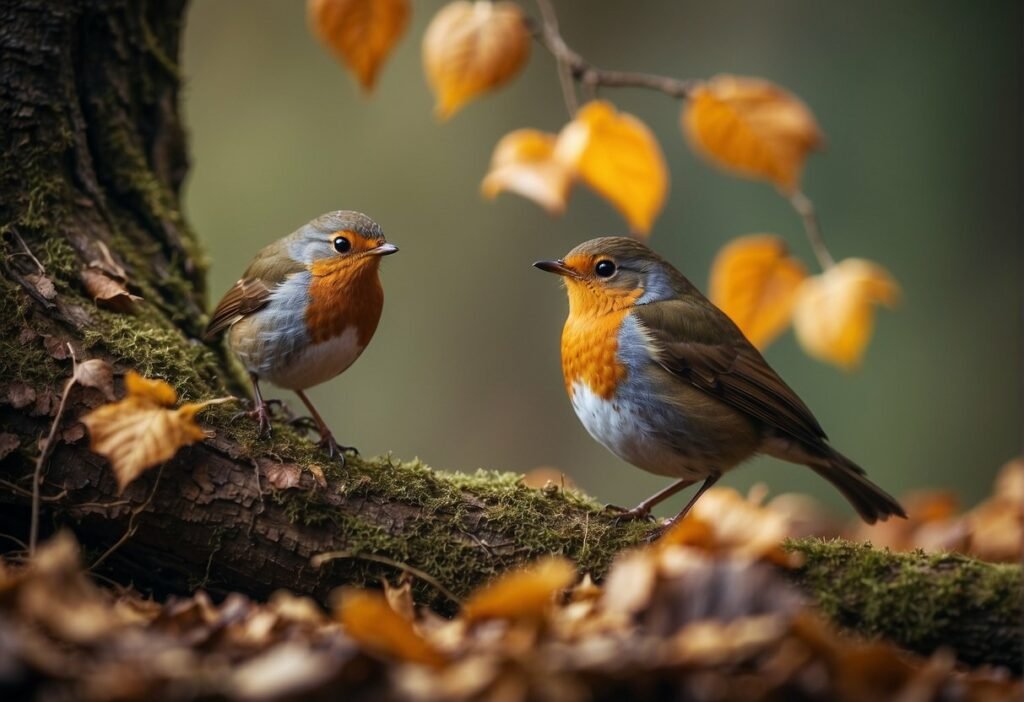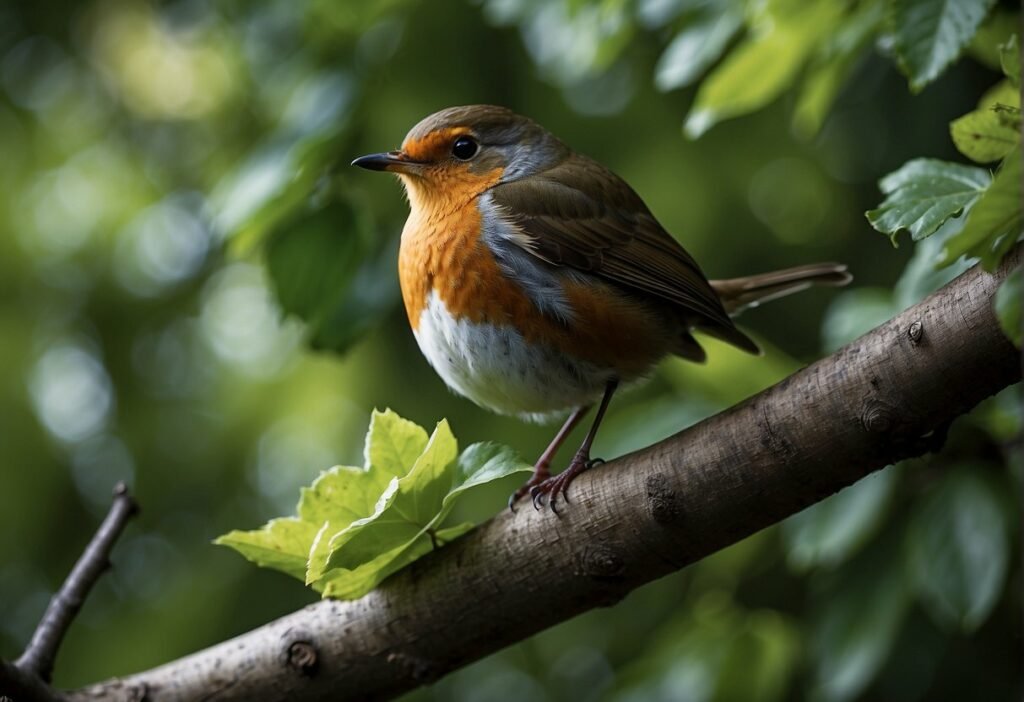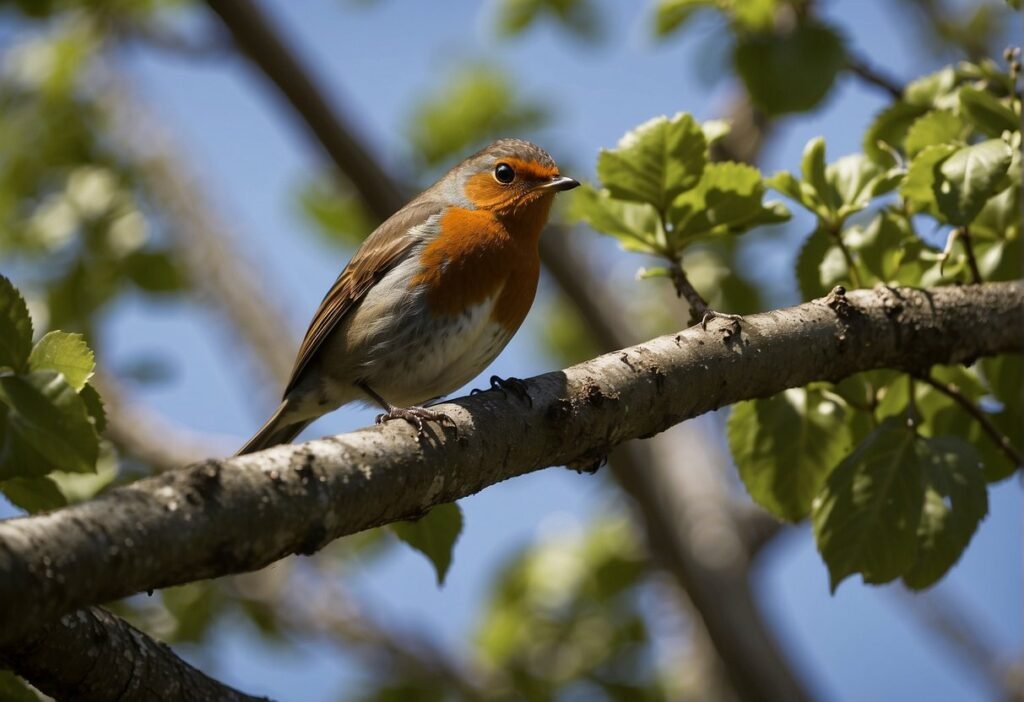Robins are a common sight in many backyards and parks, with their distinctive red breast and melodious song. While most people can easily recognize a robin, differentiating between male and female robins can be more challenging. However, there are several key physical and behavioral characteristics that can help distinguish between the two sexes.

One of the most obvious differences between male and female robins is their size. Male robins tend to be slightly larger than females, with longer wings and tails. Additionally, male robins have a more vibrant red breast compared to the duller, more muted coloring of the female. However, these differences can be subtle and may not always be reliable indicators of sex.
Another way to differentiate between male and female robins is by observing their behavior during the breeding season. Male robins are typically the ones who establish and defend territory, singing loudly and aggressively chasing away other males. Females, on the other hand, tend to be more discreet and focused on building their nests and caring for their young. By paying attention to these behaviors, it is possible to identify the sex of robins with greater accuracy.
Overall, while it may take some practice and close observation, differentiating between male and female robins is a skill that can be learned. By paying attention to physical characteristics and behaviors, birdwatchers and backyard enthusiasts can gain a greater appreciation for these beloved feathered friends.
Identifying Gender Differences in Robins
Physical Characteristics
Male and female robins have several physical characteristics that differentiate them. The male robin is slightly larger than the female robin, with a longer tail and a more upright posture. The male robin also has a deeper red breast than the female robin.
In terms of plumage, male and female robins have similar coloration, but there are subtle differences. The male robin has a darker head and back, while the female robin has a lighter, more brownish head and back. Additionally, the male robin has white bars on its tail feathers, while the female robin does not.
Behavioral Traits
Robins are territorial birds, and during the breeding season, males and females exhibit different behaviors. Male robins are more territorial than females and will defend their territory vigorously. They also engage in courtship feeding, where they bring food to the female to demonstrate their suitability as a mate.
Female robins are responsible for building the nest, incubating the eggs, and caring for the young. During the breeding season, they are less territorial than males and will often tolerate the presence of other birds in their territory.
In conclusion, while male and female robins share many physical characteristics, there are subtle differences in their appearance and behavior that allow for differentiation. By observing their size, red breast, plumage, tail feathers, white bars, and territorial behavior, one can accurately identify the gender of a robin.
Robins in Their Habitat
Robins, specifically American robins, are a common sight in North America. They are easily recognizable with their reddish-orange breast and dark gray back. These birds can be found in various habitats, including woodlands, parks, gardens, and suburban areas. European robins, on the other hand, are found in Europe and parts of Asia.
Diet and Predation
Robins are omnivorous and feed on a variety of food sources. They primarily consume insects during the breeding season, and switch to fruits and berries during the winter months. Earthworms are also a favorite food of robins. However, they face threats from predators such as hawks, snakes, and cats.
Reproduction and Care
Robins are monogamous and territorial during the breeding season. The hen builds the nest using grass, twigs, and mud, and incubates the eggs while the male provides food. The chicks hatch after 12 to 14 days and are cared for by both parents. The parents continue to feed the chicks for around two weeks until they can fly and leave the nest.
Conservation and Study
Robins are not considered endangered, but their populations have declined in some areas due to habitat loss and pesticide use. Ornithologists study robins to learn more about their behavior and biology. DNA testing and aging techniques are used to track the population and understand their territorial behavior. Juvenile robins are also studied to understand their development and growth.
In conclusion, robins are fascinating birds that are commonly found in North America and Europe. They have unique characteristics such as their yellow bill and territorial behavior. Understanding their habitat, diet, and reproductive behavior can help us appreciate and protect these beautiful birds.
Frequently Asked Questions
What are the visual differences between male and female robins?
Male and female robins have similar coloring, but there are a few differences that can help distinguish between the two. Males typically have brighter and deeper red breasts, while females have a more washed-out orange or brownish color. Additionally, males tend to have darker heads and backs, while females have lighter coloring in these areas.
Can you identify a female robin by its plumage?
Yes, female robins can be identified by their plumage. As mentioned earlier, females have a more subdued coloration than males, with a lighter orange or brownish breast and lighter head and back feathers. However, it can be more difficult to distinguish between males and females during the winter months when their coloring is less vibrant.
What behaviors distinguish male robins from females during nesting season?
Male and female robins both take part in building the nest and caring for the young, so their behaviors during nesting season are fairly similar. However, males may be more aggressive in defending the territory around the nest and may spend more time singing and displaying to attract a mate.
Is there a noticeable size disparity between male and female robins?
Male and female robins are similar in size, with males being slightly larger on average. However, the difference in size is not typically noticeable unless the two birds are side by side.
Do both male and female robins take part in singing?
Yes, both male and female robins sing. However, males tend to sing more frequently and loudly, particularly during mating season when they are trying to attract a mate.
Is it common to observe pairs of robins together outside of mating season?
Yes, it is common to observe pairs of robins together outside of mating season. Robins are social birds and often form flocks during the non-breeding season, which can include pairs of birds that have mated in previous years.




